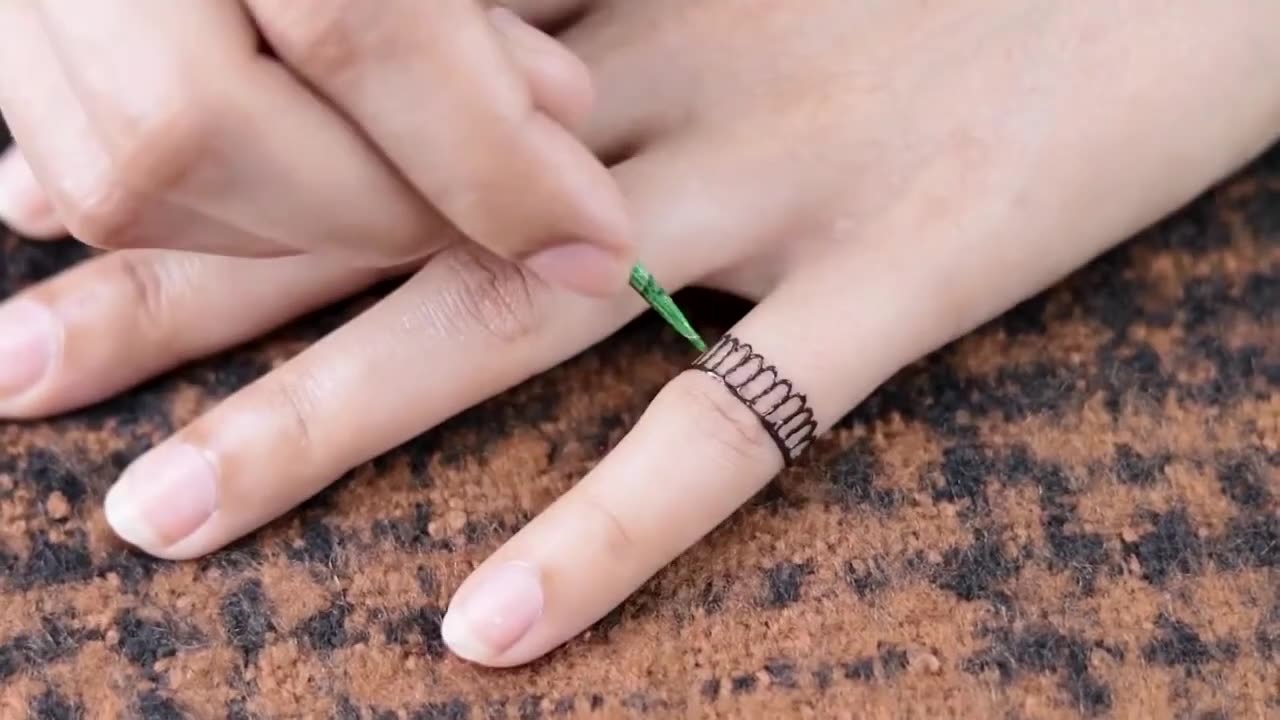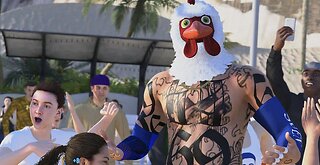Premium Only Content

Top 3 Mehndi design Hand art from the experts | wowvideos
Mehndi is a form of body art and temporary skin decoration originating in ancient India, in which decorative designs are created on a person's body, using a paste, created from the powdered dry leaves of the henna plant (Lawsonia inermis). Dating back to ancient India, mehndi is still a popular form of body art among the women of the Indian subcontinent, Bangladesh, Pakistan, Nepal, the Maldives, Africa and the Middle East. In the late 1990s, mehndi decorations became fashionable in the West, popularized by Indian cinema and entertainment industry, where they are called henna tattoos.
Mehndi is derived from the Sanskrit word mendhikā. The use of mehndi and turmeric is described in the earliest Hindu Vedic ritual books. It was originally used for only women's palms and sometimes for men, but as time progressed, it was more common for men to wear it. Staining oneself with turmeric paste, as well as mehndi, are Vedic customs, intended to be a symbolic representation of the outer and the inner sun. Vedic customs are centered on the idea of "awakening the inner light". Traditional Indian designs are representations of the sun on the palm, which, in this context, is intended to represent the hands and feet. Mehendi has a great significance in performing classical dance like Bharatnatyam.
There are many variations and designs. Women usually apply mehndi designs to their hands and feet, though some, including cancer patients and women with alopecia occasionally decorate their scalps. The standard color of henna is brown, but other design colors such as white, red, black and gold are sometimes employed.
Mehndi in Indian tradition is typically applied during Hindu weddings, Namboodiri weddings and Hindu festivals like Karva Chauth, Vat Purnima, Diwali, Bhai Dooj, Navraathri, Durga Pooja and Teej. Muslims in the Indian subcontinent also apply Mehndi during Muslim weddings, festivals such as Eid-ul-Fitr and Eid-ul-Adha.
In Hindu festivals, many women have Henna applied to their hands and feet and sometimes on the back of their shoulders too, as men have it applied on their arms, legs, back, and chest. For women, it is usually drawn on the palm, back of the hand and on feet, where the design will be clearest due to contrast with the lighter skin on these surfaces, which naturally contain less of the pigment melanin.
Alta, Alata, or Mahur is a red dye used similarly to henna to paint the feet of the brides in some regions of India, for instance in Bengal.
Likely due to the desire for a "tattoo-black" appearance, some people add the synthetic dye p-Phenylenediamine (PPD) to henna to give it a black colour. PPD may cause severe allergic reactions and was voted Allergen of the Year in 2006 by the American Contact Dermatitis Society.
-
 2:04:08
2:04:08
Inverted World Live
8 hours agoTop Secret Area 51 Project Spawns 'Invisible Enemy' | Ep. 77
73.7K11 -
 2:51:11
2:51:11
TimcastIRL
8 hours agoUNHINGED Liberals PROTEST Colbert Cancellation In NYC, Propaganda Machine IS COOKED | Timcast IRL
197K90 -
 2:42:48
2:42:48
The Quartering
8 hours agoToday's News Chat & Act 2 Of Expedition 33
77.5K4 -
 7:42:53
7:42:53
SpartakusLIVE
10 hours agoMonday MOTIVATION || Games w/ the BOYS into the NIGHT
71.6K1 -
 3:16:02
3:16:02
Barry Cunningham
9 hours agoNEWS ON THE PLOT AGAINST THE PRESIDENT AND IT'S A MOVIE NIGHT!
107K64 -
 2:00:32
2:00:32
Glenn Greenwald
11 hours agoWorld Finally Horrified by Israel's Atrocities in Gaza; Mass Starvation Expert Warns of Spiraling Crisis in Gaza; AOC Votes to Fund Israel's Iron Dome | SYSTEM UPDATE #489
110K159 -
 8:13:52
8:13:52
Spartan
9 hours agoSpartan - Pro Halo Player for OMiT | Scrims vs OMiT Black
42.1K1 -
 2:47:11
2:47:11
crgoodw1n
7 hours agoMonday stream Pt.2! Max Traders are almost here!
34K1 -
 1:28:30
1:28:30
Gurk
7 hours ago $1.05 earnedMLB CO OP
31.8K -
 1:46:27
1:46:27
Tim Pool
15 hours agoSin Frontera: The End of Illegal Immigration
207K72